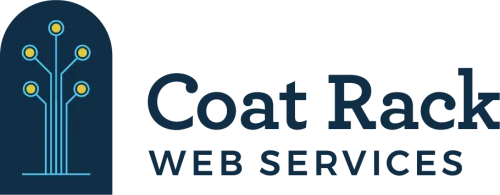August 19, 2024
Why Do We Need A Strategic Product Roadmap?
Most non-profit organizations develop digital technology products to advance their mission goals. These products can range from client-facing websites to apps. They can also take the form of internal products such as CRM (Customer Relationship Management) systems, fundraising tools, or data warehousing and data mining tools.
Unfortunately, these often underperform due to several common issues:
-
Siloed Efforts: Projects are often isolated within a single department, or even handled by just one individual.
-
Redundant Development: Similar projects may be developed concurrently by different departments without coordination.
-
Narrow Focus: Internal products are sometimes managed by operations, with little consideration of the impact on clients or customers.
-
Resource Misallocation: Some projects are well-funded and supported by product and technology teams, but these resources are not shared across the organization.
Ultimately, these projects lack organization-wide strategic product management, guidance, and collaboration. This diminishes the likelihood of each project truly servicing the organization's mission.
The solution is to create an organization-wide Strategic Product Roadmap, a comprehensive nonprofit strategic plan that aligns with strategic goals, and defines how all products should develop over the next one to two years.
The Strategic Product Roadmap is a critical component of the overall nonprofit strategic plan.
Crafting a Nonprofit Strategic Plan
Developing a nonprofit strategic product roadmap is a collaborative process best led by someone who both deeply understands digital product development and can engage at a strategic level with the organization's decision makers.
Some organizations hire a Vice President of Product to create and maintain the nonprofit strategic plan, while others partner with consultants who bring the expertise to guide the organization in nonprofit strategic planning. In some cases the work is transitioned back into the organization once it has taken root; in others, the consultants continue to manage the plan on an ongoing basis.
The process typically begins with identifying the products that will be governed by the new roadmap, understanding the overall strategic goals, and consulting with high-level decision makers to define the strategic goals of the products. From this, the initial one- to two-year nonprofit strategic plan can be drafted.
This plan should be high-level enough for decision makers to quickly grasp the current status and future priorities of each project.
Although Gantt Charts are sometimes seen as outdated, they remain an effective tool for presenting this information in a clear, digestible format, with time represented across the top, perhaps with one column per month, and each product or goal listed as a line item.
All product offerings across the organization should be represented in the plan. Excluding some products introduces organizational risk, as they may languish without proper planning and resources.
Necessary resources, such as staffing and funding, should be noted on the chart. Supporting documentation should link each project to the organization's strategic goals, key performance indicators, and success measures.
Essential Steps in Nonprofit Strategic Planning
The most important factor for the success of a strategic product roadmap is establishing organization-wide nonprofit strategic planning governance. Everyone, from the top down, needs to be invested in both the creation and the ongoing maintenance of the roadmap.
The roadmap should encompass all products and projects within the organization. While this may not happen immediately, the organization should start with what's possible and continue crafting and refining the nonprofit strategic plan to the best of its abilities.
This plan then becomes part of a continuous change management process evolving to reflect the organization's strategic direction and translating it into actionable product items.
Weekly nonprofit strategic planning meetings with high-level decisions makers are crucial during the initial phases to align on the overall direction and timeline. These meetings also help to create buy-in and understanding across all departments.
After the initial development of the plan itself, nonprofit strategic planning governance should dictate the cycle of meetings, the involvement of high-level decision makers, and the ongoing management of stakeholders, product owners, and product teams.
Ongoing responsibilities for decision makers include:
-
Identifying stakeholders: Stakeholders are the business resources responsible for the strategic goals and growth of individual projects. They are the ultimate decision makers for their projects.
-
Identifying product owners: Product owners are the project managers responsible for delivering the project. Some organizations have multiple product owners who collaborate, while others may have a single product owner with intermediaries facilitating communication with stakeholders.
-
Resourcing the product organization: High-level product stakeholders should continuously assess the funding and staffing needs of the product organization. This includes identifying staff members who are assigned to product teams and sourcing external experts or consultants as needed.
-
Agreeing on Product Implementation Processes: The organization should adopt a project management approach that breaks projects into phases and emphasizes continuous collaboration and improvement. Teams should follow a cycle of planning, executing, and evaluating to manage product development effectively.
Best Practices in Strategic Product Management
Effective nonprofit strategic planning involves aligning all digital products with the organizations broader mission and goals.
The Strategic Product Roadmap is a living document that must be continuously updated as the organization's goals and resources evolve. As priorities change, so will the focus of digital product development. The roadmap should reflect these changes.
It is critical to ensure that all digital products fall under the strategic product management umbrella. Folding existing projects into the overall governance structure can be challenging, but it is a necessary step for creating a comprehensive and accurate nonprofit strategic plan.
Adhering to governance processes is critical. Organizations that start strong, but then allow digital projects to start outside the strategic product roadmap, risk reverting back towards the pitfalls the roadmap was designed to avoid.
Finally it is vital for stakeholders to understand that this is their roadmap, regardless of who is in charge of managing it. Stakeholders must take ownership of their projects and their strategic product management direction.
Nonprofits aiming to develop digital products often need guidance in creating strategic roadmaps that empower them to take control of their product development processes. At Coat Rack, we've developed a Strategic Product Roadmap process that helps organizations consolidate efforts and mitigate the risks of underperforming products that fail to fully support the organization's mission.
It's inspiring to witness the excitement that can be generated and maintained by a well-crafted and adhered-to strategic product roadmap. This tool can transform an organization's culture from "we can't do this" to "we are successful and competitive".
At Coat Rack, we specialize in providing tailored Application Development, Technical Consulting, and Strategic Product Management services to empower nonprofits in delivering impactful projects.
If you're ready to transform your technology solutions, schedule a free consultation with us today and discover how we can help you achieve your mission effectively.



